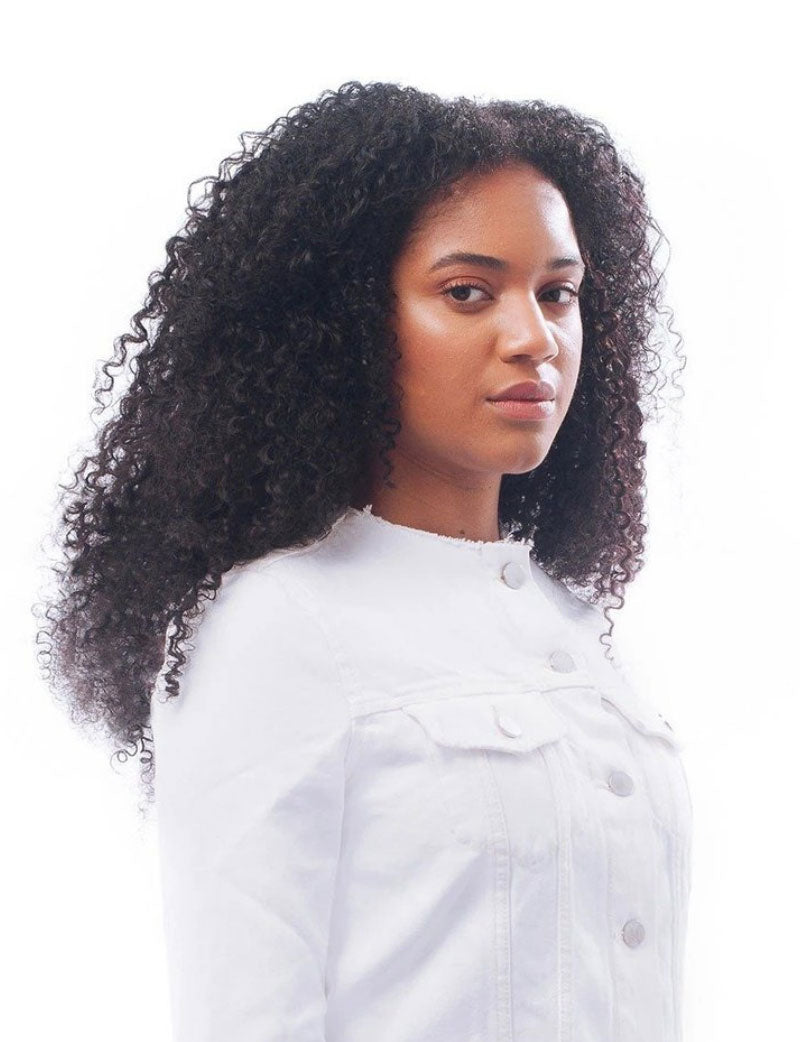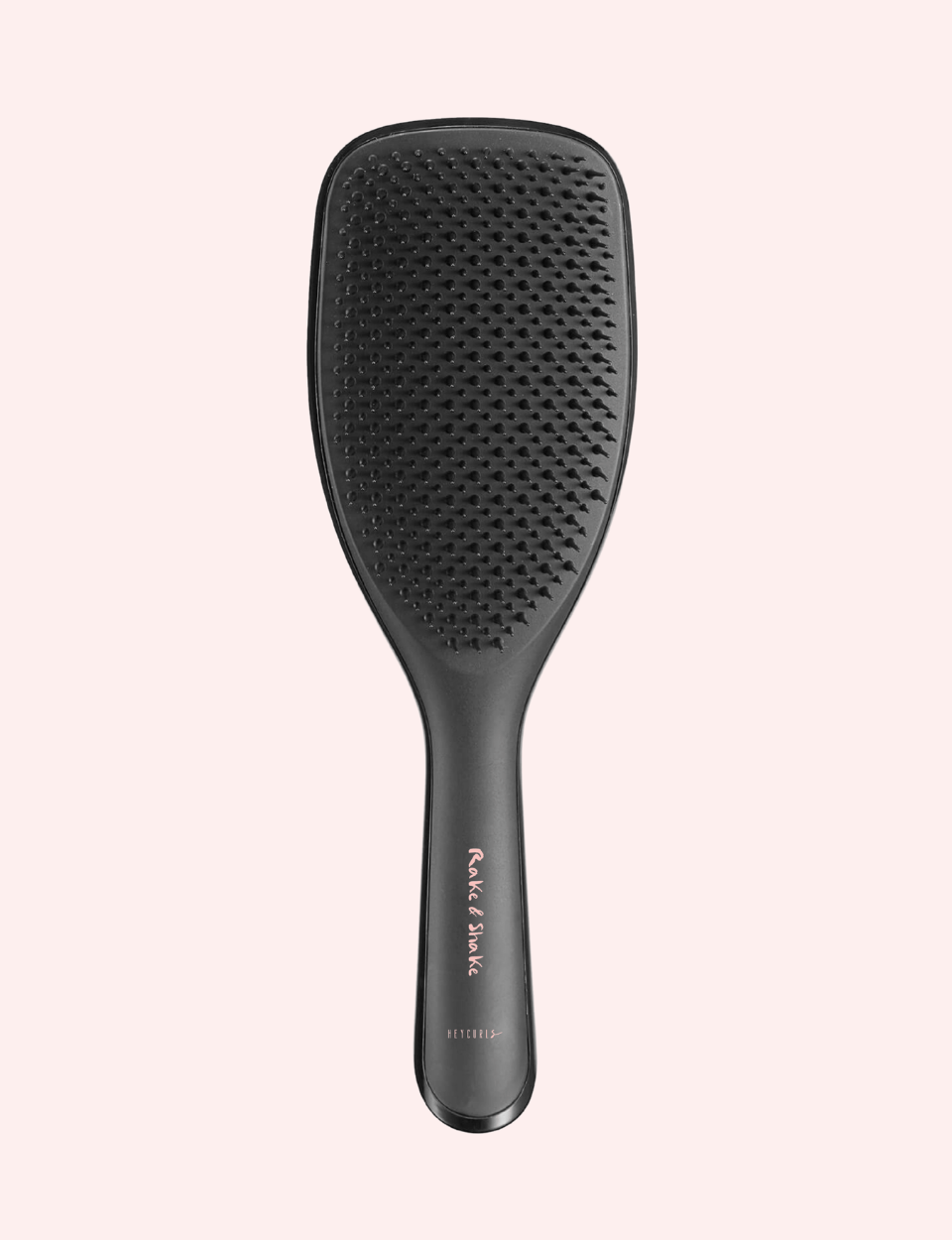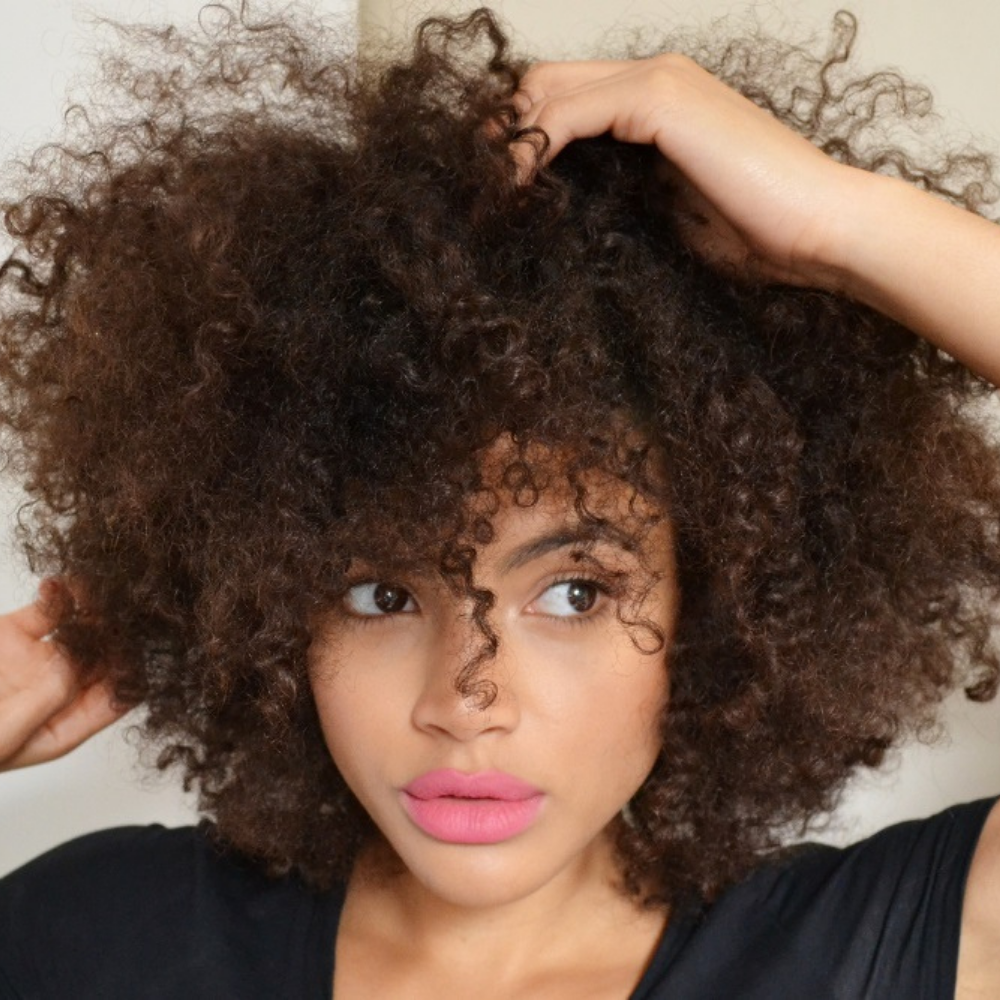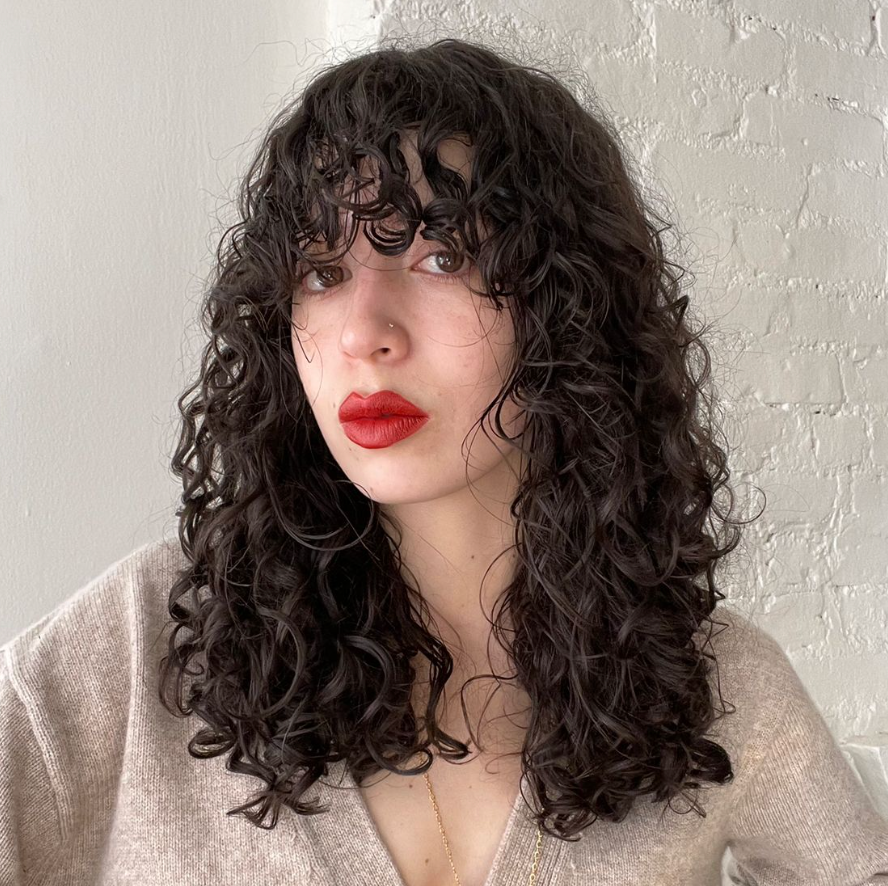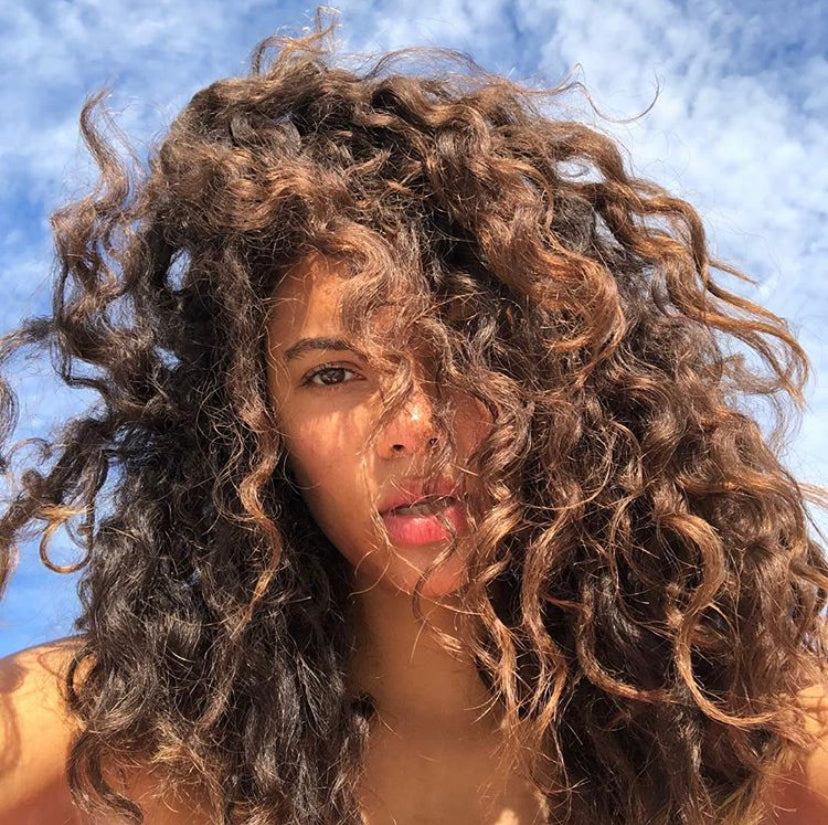When caring for curly hair, most naturalistas tend to focus on hair type and moisture. But if you’re finding that your hair is still frizzy, brittle, and your curls lie flat and dull, you may be overlooking one key factor: hair porosity. Dealing with curly hair is like putting pieces of a complicated puzzle together. Whether you have 3b or 3c curls, and its moisture level are just a couple parts of the puzzle—the other is hair porosity. Magic happens when you learn to balance these puzzle pieces according to your hair’s needs.
In this blog, you’ll learn all about what hair porosity is, how to figure out what porosity your hair is, and how to care for it according to its porosity level.
What Does Hair Porosity Mean?
Hair porosity refers to your hair’s ability to absorb moisture. Every hair strand has 3 layers: the medulla (the innermost portion that extends from inside the shaft), the cortex (a thin layer of middle and outer hair) and the cuticle (the outermost layer). If the hair has a tightly bound cuticle layer, it means the strand has a lower porosity and thus it’s more difficult for water to penetrate into the middle of the hair strand. Likewise, if the cuticle is raised and has gaps and holes, it will make it easier for water to absorb, and the hair has a higher porosity. Hair needs moisture in order to stay hydrated and healthy—especially natural and curly hair. This is why knowing where your hair lies in the porosity range can help you tailor your hair routine accordingly.
How Do I Figure Out My Hair’s Porosity?
To understand what your hair’s porosity is, you can do the hair porosity test. Here are 3 hair porosity tests you can do at home:
The float test
Take a clean strand of hair and drop it into a bowl of water. Wait for a couple of minutes, then check to see where the hair stand is laying in the bowl. If it has floated to the top of the water, it means your hair has low porosity. If it sinks to the bottom, it means your hair has high porosity. If it floats somewhere in the middle, it means your hair has medium or normal porosity. Be sure that your hair is clean and dry when you conduct this test, as hair products can alter the results.
The finger slide test
Take a strand of hair between your thumb and forefinger and slide it up toward your scalp. If the hair feels smooth, that means the cuticle is tightly bound and your hair has low porosity. If you feel any bumps, that means the cuticle is more open, and the hair has higher porosity.
The Spray Bottle Test
Take a spray bottle and spray a couple of spritzes of water onto your hair. Notice what happens to the water on your hair strands. If it forms beads, that means it can’t penetrate through because the hair has low porosity. If it absorbs quickly, that means the hair has high porosity. If it sits on the surface for a little bit before absorbing, that means the hair has medium porosity.
Now that you’ve determined what porosity level your hair has, what does this mean? Let’s take a further look at what it means to have high porosity, medium porosity, and low porosity hair.
By the way, natural hair can be all types of porosity: high, low, and medium.
High Porosity Hair
As previously mentioned, high porosity hair means the hair absorbs moisture easily. Highly porous hair means the hair cuticle has gaps and holes, allowing water and moisture to easily travel in. While this is good news in that the hair easily absorbs moisture, this also means that it’s quick to lose moisture as well. While hair porosity is usually due to genetics, factors like heat styling, bleaching, and chemical processing can damage the hair cuticle, leading to high porosity hair. High porosity hair easily frizzes in humid weather, air dries quickly, and becomes dry quickly in dry weather.
How to care for high porosity hair
High porosity hair is prone to tangling and frizzing. Here are some ways to care for it, to avoid these issues:
-
Pre-poo and detangle: Before stepping in the shower, apply a bit of hair oil or conditioner to your strands and finger detangle. This will help avoid tangling once you get your hair wet
-
Use the LCO (Liquid, Cream Oil) method: With high porosity hair, liquid, cream, then oil will be the best way to apply hair products to ensure the hair shaft locks in moisture. Going from lightest to heaviest product seals moisture in.
-
Use a protein treatment: High porosity hair needs extra protein to fortify hair cuticles and fill in those gaps and holes. A protein treatment will help strengthen hair strands and improve hair elasticity. Look for products with wheat, silk, or keratin protein ingredients.
-
Avoid water-based hair products: Instead, opt for cream or oil-based products to seal in moisture, and stray away from silicones, alcohols, and sulfate-based shampoos, which strip the hair of essential oils and moisture.
-
Use protective hairstyles: Because high porosity hair is more fragile and prone to tangling and breakage, wearing protective hairstyles can be a great way to avoid constant manipulation and protect fragile hair strands. Try braids, twist outs, or hair scarves, and be sure to protect your hair when you sleep at night!
Low Porosity Hair
Low porosity hair means the outer layer of the hair is tightly bound. This makes it difficult for water and moisture to penetrate through; however, unlike high porosity hair, it does retain moisture well. For low porosity hair, product tends to sit on the hair for a long time, rather than penetrating into the hair shaft, hair takes a long time to get wet, and lots of heat is usually needed to help with moisture absorption. If you have low porosity hair and have tried coloring it, you may also find that it doesn’t take color easily due to its lack of absorbing capabilities.
How to care for low porosity hair
-
Apply moisturizing products when your hair is warm: Heat opens up the hair shaft, allowing moisture to absorb better into the strands. When taking a shower, be sure to get the water nice and hot before applying a hydrating conditioner.
-
Choose the right ingredients: Opt for products which have humectants like honey or glycerin. These ingredients suck moisture in from the air right into your hair for that much needed moisture.
-
Use lightweight creams and conditioners: You may think it’s better to use heavier creams to penetrate the hair, however, this is wrong! Instead, a lightweight conditioner will be easier to penetrate through the cuticle and hydrate hair strands.
-
Use a deep conditioner and shower cap: Once you apply a deep conditioner, wear a shower cap and use a blow dryer to gently heat up your hair. This will allow the conditioner to seep more easily into stubborn tresses.
-
Use the LCO method: Just like high porosity hair, the goal here is to lock in much-needed moisture. Therefore, applying products from lightest to heaviest will be best to lock in hydration.
Medium Porosity Hair
Medium porosity hair means your hair’s cuticle is neither tightly bound nor has too many gaps and holes. It’s also known as normal porosity hair. Medium porosity hair allows moisture in fairly easily, but also doesn’t lose it as quickly as high porosity hair, making it the easiest type of hair porosity to manage. If you have medium porosity hair, congratulations! You’ll find it takes color easily, doesn’t frizz too much in high humidity, and looks shiny, healthy, and glossy without too much work.
How to care for medium porosity hair
-
Avoid heat styling and chemical processing: Your hair is already at the perfect level of health and porosity, so you’ll want to keep it this way! Avoid bleaching, excessive heat styling, perms, or relaxers, that may open up the hair cuticle permanently.
-
Use the LOC (Liquid, Oil, Cream) method: Because medium porosity hair doesn’t have much trouble absorbing and retaining moisture, opt to apply your hair products you can apply your liquid hydrator first, then an oil like jojoba or organ, and lock it in with a hydrating cream.
-
Use a wide-tooth comb or detangling brush: Boar bristle brushes are great for distributing oils throughout the hair shaft, and wide-tooth combs can be used while the hair is wet to protect the strands from breakage.
-
Use colorless shampoos: These are lighter in weight, which won’t over burden your hair strands. As always, avoid sulfates and alcohols to prevent drying.
Protect your hair with hair extensions…no matter what the porosity.
As you can see, hair porosity can be a fickle thing to navigate, but once you’ve figured out your hair’s porosity and solidified your hair routine, you’ll watch your hair transform! If you’re looking for an instantaneous hair transformation, try clip in curly hair extensions. They’re a quick and easy way to achieve instant length and volume, without fussing and over-manipulating your hair.
Do you have low, high, or medium porosity hair? Do you have any care tips and tricks? Let us know in the comments below.

